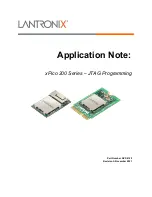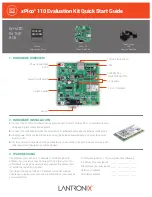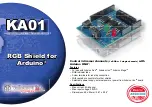NXP Semiconductors
UM10858
PN7462 family HW user manual
UM10858
All information provided in this document is subject to legal disclaimers.
© NXP B.V. 2018. All rights reserved.
User manual
COMPANY PUBLIC
Rev. 1.4 — 14 May 2018
314514
224 of 345
Bit
Symbol
Access
Reset
Value
Description
7:0
MCL15 – MCL8 R/W
1010
0100b
Most significant byte of a programmable 16-bit clock counter (see ATR
counter Functional Description).
13.6.2.13 Register ct_mchr_lsb_reg (Mute card CounteR RST High register Least Significant
Byte)
This configuration register is the least significant byte of a 16-bit counter used to check
whether the card is mute when RST is logic 1.
Table 261. ct_mchr_lsb_reg (address 0030h) bit description
Bit
Symbol
Access
Reset
Value
Description
31:8
RESERVED
-
0
rReserved
7:0
MCH7 - MCH0
R/W
0111
0100b
Least significant byte of a programmable 16-bit clock counter (see
ATR counter Functional Description).
13.6.2.14 Register ct_mchr_msb_reg (Mute card CounteR RST High register Most Significant
Byte)
This configuration register is the most significant byte of a 16-bit counter used to check
whether the card is mute when RST is logic 1.
Table 262. ct_mchr_msb_reg (address 0034h) bit description
Bit
Symbol
Access
Reset
Value
Description
31:8
RESERVED
-
0
reserved
7:0
MCH15 – MCH8
R/W
1010
0100b
Most significant byte of a programmable 16-bit clock counter (see ATR
counter Functional Description).
13.6.2.15 Register ct_srr_reg (Slew Rate configuration Register)
This configuration register defines the slew rate values on the I/O and CLK lines.
Table 263. ct_ssr_reg (address 0038h) bit description
Bit
Symbol
Access
Reset
Value
Description
31:6
RESERVED
-
0
reserved
5:4
vcc rise sel1 -
vcc rise sel0
R/W
00b
VCC rise window selection
To rise from 0 to its selected value (see ct_pcr_reg register), the"
time needed by VCC depends on the capacitance. For more
flexibility, it is possible to choose between 4 window time:
• 00: t = 5T (~120 us)
• 01: t = 10T (~240 us)
• 10: t = 16T (~380 us)
• 11: t = 21T (~500 us) - recommended
"See the activation sequence description for T definition.


















